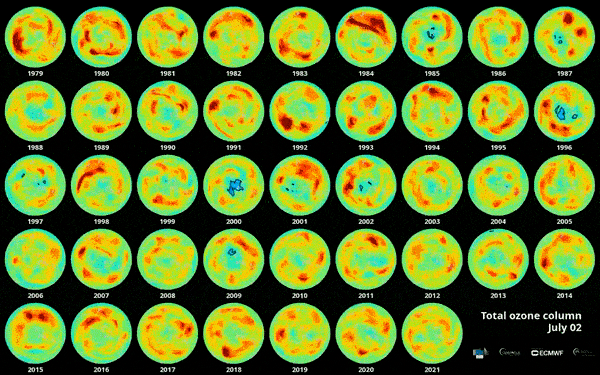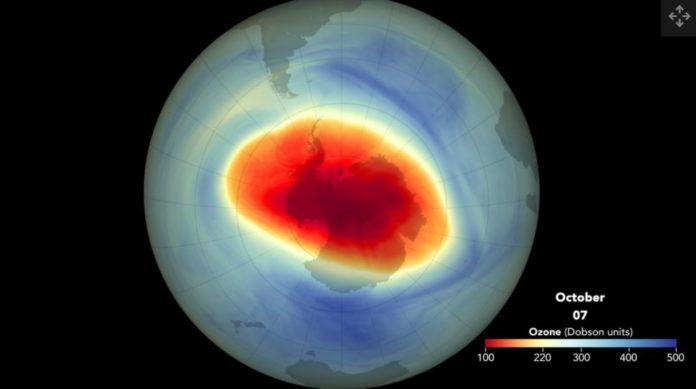The hole has grown to its 13th greatest size since 1979, thanks to a chilly Southern Hemisphere winter and possible impacts of global warming.
NASA and the National Oceanic and Atmospheric Administration (NOAA) use three satellites to monitor ozone depletion, which you can see in the NASA video: Aura, Suomi-NPP, and NOAA-20.
On Oct. 29, NASA released a new video depicting the Antarctic ozone hole’s expansion. This year’s hole is likely to close no early than late November.
Ozone is a naturally occurring oxygen compound that can also be produced by people and develops high in the upper atmosphere. When UV light from the sun reacts with molecular oxygen in our atmosphere, natural stratospheric ozone develops. The resulting ozone protects the Earth’s surface from UV radiation, similar to sunscreen.
Unfortunately, once the sun emerges over the Antarctic following the polar winter, chlorine and bromine produced by human activities erode the ozone layer, since the sun’s energy accelerates ozone depletion in that region. The 1987 Montreal Protocol prohibits the use of ozone-depleting compounds in over 50 countries, although the majority of the world’s countries are not signatories, and at least some of those that are do not follow the rules.
Nonetheless, NASA claims that the approach has proved beneficial.
“This is a large ozone hole because of the colder than average 2021 stratospheric conditions, and without a Montreal Protocol, it would have been much larger,” Paul Newman, chief scientist for Earth sciences at NASA’s Goddard Space Flight Center, said in a statement.

This year’s ozone hole reached a top size of 9.6 million square miles, roughly the area of North America (24.8 million square kilometers). According to NASA, the annual shrinking of the ozone hole began anew in mid-October. The hole would have been around 1.5 million square miles (nearly four million square kilometers) greater if the Montreal Protocol had not come into place, according to the EPA, assuming the atmospheric substance levels of the early 2000s.
When treaty was signed, scientists predicted that the ozone layer would recover by 2060. However, the recovery is taking longer than expected, with the consensus currently being no earlier than 2070, according to Vincent-Henri Peuch, head of the European Union’s Copernicus Atmosphere Monitoring Service, in a recent interview with Space.com.
Image Credit: NASA
You were reading: NASA’s new video shows the massive ozone hole developed above Antarctica this year
